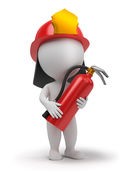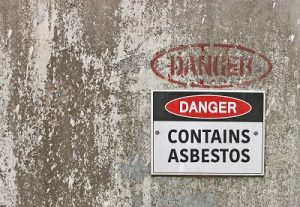
Importance of Updated Safety in the Workplace
Safety in the workplace is essential. Part of safety protocol entails inspecting and replacing any damaged equipment. Personal protective equipment (PPE) applies to any industry. It’s helpful to know what PPE your team should wear as well as the stationary equipment available to keep everyone safe.
Why Is it Important to Inspect for Damage and Replace Equipment?
There are several factors to consider when inspecting damaged equipment and replacing it. Dangerous and risky job sites require that personal protective equipment, like helmets, must always be worn to avoid fatal accidents such as falling objects. All PPE must be working correctly and replaced regularly.
Inspect and Replace PPE in a Timely Manner.
Identify the correct time to replace PPE. Replacing equipment too early is a waste of resources to pay for new equipment. However, waiting too long to replace PPE is risky because, if equipment fails, accidents and injuries happen.
Develop Standards and Protocols for Inspecting PPE.
Establish inspection timelines, standards and protocols. For example, everyone could be responsible for their personal protective equipment, or one or two people could be assigned responsibility for inspecting the equipment. If and when there is an issue with the equipment, it should immediately be taken out of circulation and replaced. Therefore, you should always have extra PPE on hand.
When creating inspection protocols, you need to be aware of what to look for when inspecting PPE. Some examples of what to inspect include:
Use a PPE Grading System.
Create a PPE grading system. A grading system should be common to everyone and helps your employees instantly know when equipment should be replaced. PPE may need to be replaced while it’s getting fixed or may need to be thrown out altogether. It all depends on the type of job.
Use Occupational Safety and Health Administration Guidelines.
Refer to The Health and Safety Executive (HSE) and Government guidelines. Be sure that your team knows exactly what the guidelines are and be sure they are met at all times. These guidelines can be included in your inspection and replacement requirements.
COVID and PPE
When managing the risk of COVID-19, additional PPE beyond what you usually wear may not be beneficial. This is because COVID-19 is a different type of risk to the risks you normally face in a workplace, and needs to be managed through social distancing, hygiene and fixed teams or partnering, not through the use of PPE.
The UK Government has published COVID-19 Secure working safely guidance for workplaces that provides a hierarchy of risk control measures that employers and the self-employed are expected to follow when reviewing their risk assessments for COVID-19 hazards.
When an Incident Occurs, Take Action Immediately.
Take action after an incident. Any affected PPE should always be replaced. Depending on the incident, it may be possible to save the gear after being inspected. Otherwise, it should be replaced.
Don’t Forget About Stationary Equipment
Be aware of stationary equipment like machinery and the need to stand behind a protective shield. This equipment also requires you to inspect, repair, and/or replace the stationary equipment as well.
Be Consistent.
Though replacing and inspecting equipment may seem like a hassle, it is better to be safe than sorry. Make sure your workers are aware of necessary PPE and inspect their gear at the beginning of a shift or before starting a major project. You do not want to risk an accident.
What PPE Wear Is Available?
PPE wear includes head protection, eye protection, hearing protection, good respiratory protection, correct gloves, footwear, and correct work clothing.
Here are examples of the different types of PPE wear available.
Head Protection
Invest in a good helmet. Today, there are many customised features to choose from such as adjustable interior harnesses and sweatbands. Ensure PPE is compatible, for example, wearing a safety hat in conjunction with ear defenders.
Eye Protection
Work-related eye injuries unfortunately happen to hundreds of people daily worldwide. Safety glasses can prevent these injuries. Welding goggles and shields can protect you from bright light or infrared radiation.
Hearing Protection
In a high sound level environment, earplugs would be comfortable. However, ear defenders may be a better choice to have on the shop floor or construction site because you can take them on and off easily and they’re more hygienic.
Respiratory Protection
Masks are necessary when coming in contact with hazardous materials like vapour, smoke, or powder. Dust masks protect you against fine dust and other dangerous particles. Full-face masks protect you against toxic materials. These masks will protect your nose and mouth from pollution.
Hand Protection
There are different types of gloves depending on your occupation.
Protective Footwear
Different types of protective footwear serve different purposes
Correct Work Clothing
Specific types of work clothing can protect against accidents in a crowded workshop. High-visibility vests or jackets can keep you visible in dark or crowded conditions. Pants made with strong fabric will protect your skin and resist wear and tear.
Ensure the team are trained and competent to carry out their tasks.
Safety in every workplace is a must to provide a safe work environment, and keep you and your team safe.
Contact us for further information.

Toolbox Talk: Manual Handling
Why have this talk? Manual handling causes more than one third of all workplace injuries and features in almost everyone’s job in almost every sector.
What will this talk cover? The considerations and good techniques used to avoid injury when manual handling.

Do you have any questions for me?
Contact us for further information.
Businesses are being reminded that they have a legal duty to ensure that their premises have an adequate supply of fresh air in enclosed areas as part of a broad strategy to minimise the risk of the coronavirus from spreading via workplaces.
With most COVID-19 restrictions lifted, Great Britain’s Health and Safety Executive (HSE) has updated its guidance on ventilation and air conditioning as part of a package of preventative measures to help safely manage the increasing number of people returning to the workplace and to reduce infection risk.
The guidance explains how natural and mechanical ventilation can reduce coronavirus in the air while also reiterating the importance of workers keeping clean and washing their hands frequently. The updated advice also reemphasises the importance of risk assessments to identify other control measures such as social distancing and the wearing of masks.
People can improve natural ventilation in the workplace by doing simple things like opening windows and doors.
The use of CO2 monitors in the workplace can also help. Although CO2 levels are not a direct measure of possible exposure to COVID-19, checking levels using a monitor can help you identify poorly ventilated areas.
The HSE has announced that it will continue to carry out spot checks and inspections to support businesses and ensure they understand its working safely guidance.
Employers should prioritise preventative measures and adds that good ventilation will play a critical role in controlling the risk of coronavirus as businesses increasingly encourage home-based staff to return after a prolonged period working remotely.
Risk assessments must be in place to identify COVID-19 as a hazard and the associated risks. They will also identify who is at most risk and the measures to take. Companies should revisit their COVID risk assessment frequently to ensure that any additional controls necessary are identified to make the workplace secure from the virus.
Employee engagement is critical to managing risks successfully. To maximise buy-in and thereby improve the effectiveness of risk assessments, the HSE has produced a separate guide to help employers consult with staff on how to work safely.
IOSH has published its own return to work guidance, which notes that while masks and social distancing have been the more visible signs of controls, good ventilation is a largely unseen, albeit highly effective, measure to control the risk of infection.
Contact us if you have further queries.

Fire Prevention and Control Toolbox Talk
Why have this talk? Fire Prevention and Control Toolbox Talk. Fire kills and injures many people every year. All employees should be aware of their responsibilities to prevent fires and everyone must know what to do in the event of a fire.
What will this talk cover? Fire prevention, actions to take on discovering a fire and what to do if a fire takes hold.

REMEMBER: Be aware of the surroundings in your workplace and familiarise yourself with the escape routes and emergency procedures. You won’t have time if a fire breaks out.
Contact us if you require further information.

Asbestos Toolbox Talk
Why have this talk? Asbestos Toolbox Talk. Asbestos is a naturally occurring mineral and because of its excellent fire retarding and insulating properties it was widely used in the building industry in the 1980s.
Research has shown that breathing in asbestos fibres may cause lung disease and cancer and it is currently the greatest single cause of work-related deaths in the UK with several thousand people dying each year. The delay between asbestos exposure and disease can range between 10 and 50 years.
What will this talk cover? Where you might find asbestos and how to work around it.
| The use of asbestos is now banned but any building that was built before 2000 could have asbestos in it. As long as the material is not disturbed, workers should not be alarmed. If existing asbestos materials are in good condition, they can be left where they are as long as their condition is regularly checked to ensure they do not become damaged. Products where the asbestos is bound tightly (eg asbestos cement sheets or flooring tiles) are less hazardous than products such as pipe lagging which easily give off fibres, but all products need careful handling by trained workers. |
| The only way to reliably check if asbestos is present is to have a sample of the material examined in a laboratory. All potential asbestos-containing materials must be treated with caution. |
Do you have any questions for me?
Contact us for further information.